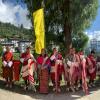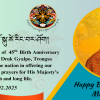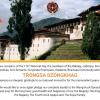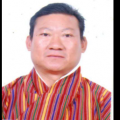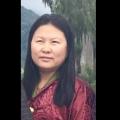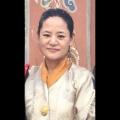Agriculture
Trongsa Dzongkhag is located in the heart of the country with elevation ranging from 800 meters to 4,800 meters above sea level. It shares boundaries with Bumthang Dzongkhag to the northeast, Wangdue Phodrang Dzongkhag to the west and Zhemgang Dzongkhag to the south, covering an area about 1807.29 sq km. Agriculture is the main employment source and source of income for majority of the population. Rice and maize are prominent cereal crops while important cash crops include potato, vegetables, citrus, and cardamom. The yields of these crops are low and there is potential to improve through the introduction of good agronomic practices and high yielding varieties. The average yield of paddy (preferred staple food) is about 1.5MT/acre. With development and two mega hydro projects coming up there is also a growing pressure to change arable land, particularly good paddy land into other land uses. Coping with crop damages by wildlife, frequent pests and diseases outbreaks, drying irrigation water source and rise in farm labor cost and labor shortages are some of the main challenges in meeting our food demands.
The main objective of the sector is to reduce poverty by ensuring food security and increase income through improved management of arable, horticulture crops and medicinal plants. Access to markets, farm inputs, construction of farm roads and selection of improved technologies are some of the means prioritized as farming has an important role to play in meeting this objective since more than 90% of the population under poverty lives in the rural areas.
The sector reaches out to farmers through a network of Extension staff placed in RNR Extension Center in all five gewog established at strategic locations throughout the Dzongkhag taking services closer to the clients. The Extension staffs placed in gewogs support the farming communities to increase food production and manage local resources. The extension staff technically work with sector while administratively works under gewog administration. The Department of Agriculture, Research Centers and Central Programs provides assistance to address the agriculture production challenges of the local farming communities.
The Dzongkhag have registered arable land of 2800ac of “Chhuzhing”, 7684ac of “Kamzhing” and about 121ac of orchards. However, most of the “Chhuzhing” and some “Kamzhing” belong to landowners from outside the dzongkhag and religious institutions which impedes successful or proper utilization of land with current scenario of acute farm labor shortage, rampant crop damages from wild animals and insufficient irrigation water.
|
Cereal crop production |
||||
|
SL No. |
Crop |
Harvested Area (Acres) |
Production (MT) |
Yield (kg/ac) |
|
1 |
Paddy |
1470 |
2314 |
1574 |
|
2 |
Maize |
1021 |
1503 |
1472 |
|
3 |
Wheat |
364 |
171 |
470 |
|
4 |
Barley |
277 |
147 |
530 |
|
5 |
Buckwheat |
584 |
373 |
639 |
|
6 |
Mustard |
83 |
25 |
297 |
|
3799 |
4533 |
|||
Sources: Agriculture Statistic, 2016
Vegetables and spices production
|
SL No. |
Crop |
Harvested Area (Acres) |
Production (MT) |
Yield (kg/ac) |
|
1 |
Potato |
281 |
1000 |
3553 |
|
2 |
Chili |
194 |
638 |
3287 |
|
3 |
Vegetables |
594.9 |
1471.26 |
|
|
4 |
Spices (Ginger & Garlic) |
63 |
102 |
|
|
5 |
Cardamom |
317 |
53 |
167 |
|
1449.9 |
3264.26 |
Sources: Agriculture Statistic, 2016
Fruits production
|
SL No. |
Crop |
Total trees (Nos.) |
Bearing trees (Nos.) |
Production (MT) |
Yield (kg/tree) |
|
1 |
Mandarin |
27946 |
15672 |
501 |
32 |
|
2 |
Other fruits & Nuts |
25085 |
12161 |
287.80 |
31.75 |
|
3 |
53031 |
27833 |
788.8 |
Sources: Agriculture Statistic, 2016
